Rockwell Software’s RSLinx is the communication hub for their RSLogix and FactoryTalk programming suites. It allows users to connect to Allen Bradley PLCs and PACs as well as Panelview Plus HMIs and other equipment that speaks Ethernet IP, DF1 or DH+ (and their variants). Typically it is used solely with Rockwell and Allen Bradley products. However, it can also be used as an OPC server for various OPC clients, such as ClearSCADA, etc.
If you have RSLinx installed and are using it as an OPC server there are a few things you need to do:
- Make sure that the PLC you want to talk to has a DDE/OPC topic shortcut or alias configured inside RSLinx. Not only is this required but doing this will make accessing tags easier (if you chose a user friendly alias).
- Once your project is configured, setup RSLinx to run “as a service” on the computer you are using. Rockwell provides a handy control panel for this. NOTE: When you do this you will no longer be able to open the RSLinx Classic project editor. RSLinx can have only one instance running at a time.
If you come across a SCADA server that is using RSLinx and it is no longer working here are a few troubleshooting steps you can try to get it working again. This assumes RSLinx is configured to run as a service already.
- Disconnect any OPC clients. RSLinx attempts to run automatically when clients attempt to connect. This is a screenshot of ClearSCADA, showing where you might disable the OPC channel connected to RSLinx.
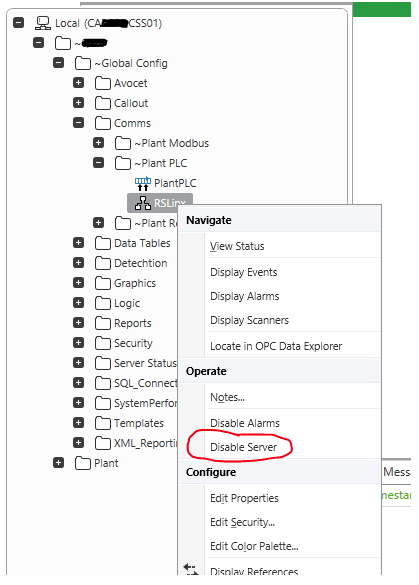
- Open the RSLinx Launch Control Panel from the start menu. Stop the RSLinx service. Uncheck ‘Always Run As Service’. This allows you to open the RSLinx Classic app and change settings.
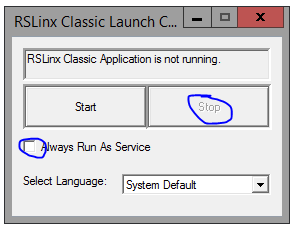
- Open RSLinx Classic. If it does not open RSLinx might still be configured to Always Run As a Service, repeat step 2. If that fails, you might have to restart.

- Click on the DDE/OPC Menu in the toolbar and select Configure OPC Topic Configuration.
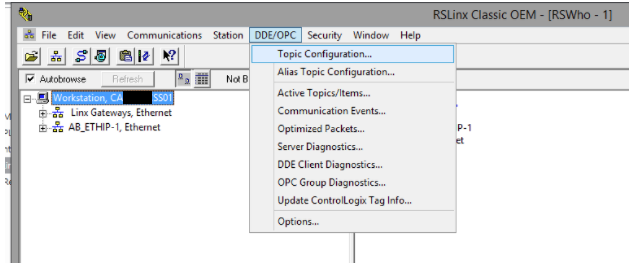
- In the dialogue that opens you will a list on the left, these are the OPC ‘shortcuts’ or OPC ‘devices’. On the right you will see the drivers configured in RSLinx and any devices that are communicating via those drivers. In the left panel, click on a device/shortcut. The driver tree on the right should expose the PLC or controller that shortcut is linked to. If the driver tree did not expand the shortcut needs to be re-linked.
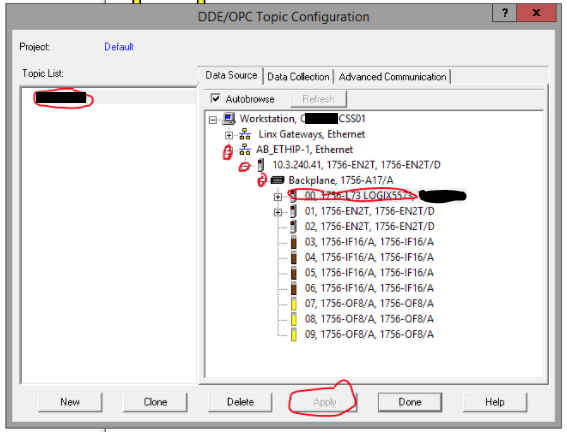
- To re-link a ‘shortcut’, click on the shortcut. Then using the Data Source tree on the right hand side, navigate to the correct driver and controller. Once you have selected the proper controller, click ‘Apply’ at the bottom of the screen. This updates the shortcut to reference the proper Driver/device.
- Click ‘Done’ and then close the RSLinx Classic App. Note: This step is very important or RSLinx will not startup as a service.
- Open the RSLinx Classic Launch Control Panel and check ‘Always Run As Service’ and then start the RSLinx service using the Start button.
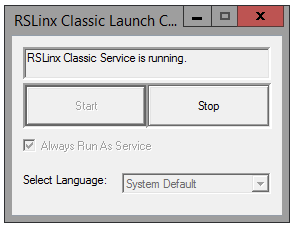
- Enable OPC connections in your client (ClearSCADA, etc.). You may have to wait a minute for the OPC client to catch up, particularly if there are a LOT of points or tags attached.